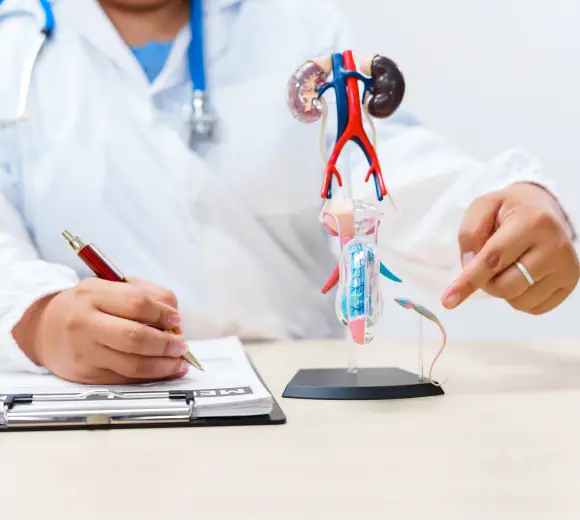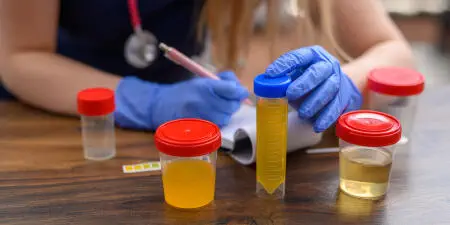Urinary Bladder Cancer

Urinary Bladder Cancer: An Overview
Bladder cancer is a common form of cancer that occurs in the bladder cells. The bladder is a hollow muscular organ that stores urine and is located in the lower abdomen. Cancer occurs in the bladder when the abnormal cells in the bladder lining begin multiplying uncontrollably. As the cancer progresses, the person starts to experience symptoms like blood in the urine, pelvic pain, and frequent or painful urination.
Bladder cancer is categorised based on the depth of its invasion into the bladder wall.
When the inner lining of the bladder is impacted, it is referred to as superficial bladder cancer. When the bladder’s inner muscle is involved, it’s known as invasive bladder cancer.
Moreover, the classification of the bladder tumor also considers its grade, which reflects the abnormality of the cells. Low-grade tumours are less aggressive, while high-grade tumours pose a more significant threat. Like all cancers, timely detection facilitates effective treatment options like surgery, chemotherapy, radiation, or immunotherapy.
Dr Aarthy, a leading urologist doctor, provides specialised care tailored to patients, using the most advanced treatments and diagnostic procedures to achieve the best results.
Urinary Bladder Cancer
Causes & Symptoms
- The Causes
- The Symptoms
- Harmful chemicals from tobacco are filtered through the bladder, making it more vulnerable to cancer.
- Extended exposure to harmful industrial chemicals such as dust, fumes, rubber, and paint.
- Bladder stones, irritations, and chronic infections.
- A genetic predisposition towards bladder cancer.
- Prior cancer therapies aimed towards the pelvic region.
- Hematuria, or the presence of blood in urine, is often the most common and noticeable indicator. Sometimes, you may not feel any pain.
- An increased need to void the bladder even when it is not full.
- Persistent pain in the pelvic region.
- Dysuria or burning sensation and discomfort during urination.
- Unexplained loss of weight and general fatigue in people with advanced-stage bladder cancer.
Cutting-Edge Techniques For Urinary Bladder Cancer Diagnosis
Consulting your doctor when you notice the symptoms increases your chances of a timely diagnosis and immediate treatment planning. Your doctor may recommend the following tests to ensure an accurate diagnosis of the cancer and its stage:
Dr. Aarthy’s Treatment Options for Bladder Cancer

Transurethral Resection of Bladder Tumor (TURBT)
A minimally invasive technique aimed at excising cancerous tissue from the bladder lining.
Cystectomy
Partial or complete excision of the bladder, depending on the cancer stage. It will be followed by reconstructive surgery to recreate a new storage and passageway to drain the urine or diversion of urine through intestinal segments.
Chemotherapy
Potent drugs are used to eliminate cancer cells and minimise the tumour size. Either neoadjuvant chemotherapy (treatment before surgery) or adjuvant chemotherapy(post-surgical treatment) may be used to eradicate any remaining cancerous cells
Immunotherapy
Bacillus Calmette-Guerin, or BCG therapy, harnesses the body’s immune system to combat cancer cells. This intravesical treatment is an option for treating early-stage bladder cancer.
Radiation Therapy
Powerful radiation is used to target and eliminate cancer cells. Radiation therapy is often combined with chemotherapy for enhanced effectiveness.
Targeted Therapy
Targets particular genetic alterations in cancer cells and aims to inhibit the growth and spread of the disease by addressing molecular abnormalities.
Intravesical Therapy
Medication is administered directly into the bladder to address superficial cancer and minimise the chances of recurrence
Begin Your Journey to Improved Bladder Health





